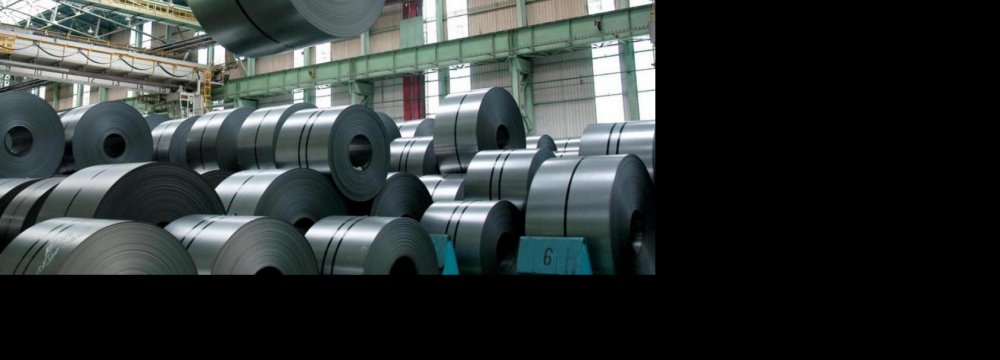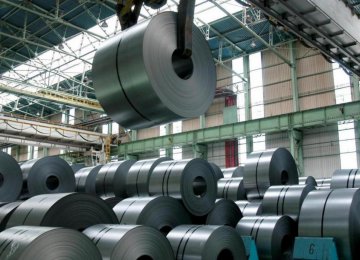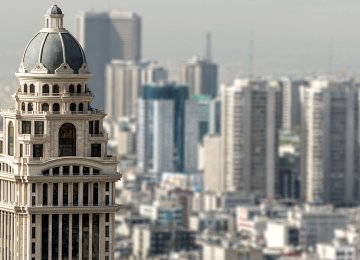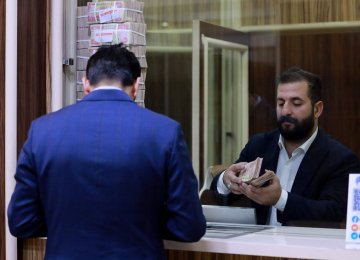Iran's raw steel production capacity will surge to 40 million tons from its present 15-17 million tons, Mehdi Karbasian, Deputy Minister of Industry, Mine and Trade said Saturday.
The domestic steel industry development plans will be implemented gradually to achieve the new production capacity of 40 million tons, added Karbasian, who is also the chairman of Iranian Mines & Mining Industries Development & Renovation Organization.
"It is highly crucial to maintain the raw material and production balance," he said, adding that raw steel production will hit 30 million tons by next year if everything goes according to plan.
Iran is a permanent member of the World Steel Association and the 15th largest steel producer in the world.
Untapped Potentials
According to a new report by the Business Monitor International, Iran's relatively low level of per capita steel production demonstrates its great potential. It is the only country in the Persian Gulf region with the resources to become self-sufficient in steel production and is the only country in the Middle East that is not heavily dependent on iron ore imports, with domestic reserves estimated at 4.5 billion tons, located in five main deposits. The country also has large coal reserves, which can be utilized by the steel industry, as well as the third-largest gas reserves after Russia and Qatar, representing an important source of energy for electricity generation. The downside is that steel has to compete with other industrial sectors - such as water desalination, petrochemicals and aluminum – for electricity supplies.
Iran has seen a high level of import growth since 1994, when domestic supply first outstripped demand. The government is attempting to boost production, largely in crude steel. The industry now operates at just 50-60% of capacity. Mobarakeh Steel Company represents around 47% of the market, followed by Khuzestan Steel Company (23%), Esfahan Steel Company (20%) and the Iranian National Steel Industries Group (10%). Mobarakeh Steel dominates exports, while Esfahan Steel and National Iranian Steel Co. are oriented towards domestic markets.
The government is aiming to establish plants across the country, with a focus on generating jobs in underdeveloped provinces. Due to poor transport links, it often remains more profitable to import steel products than to transport them internally from main production areas to more economically advanced provinces in the north of the country.
While long steel output growth is lagging behind flat steel, there are dynamic segments within the Iranian steel industry. In 2013, Isfahan Steel completed the $28 million renovation of its first blast furnace, which has a production capacity of 800,000 tons per year; its two other furnaces each have a capacity of 1.4 million tons per year.
Renewed efforts to privatize Iranian metal producers have only been partly successful. In 2011, IMIDRO announced plans to sell four new steelworks under construction to the private sector. Each of the steelworks, which consists of a DRI module, as well as a steel melt shop and billet caster, has a capacity of about 1 million tons per year of crude steel. The facilities, which will all be sold by tender, include Bafq Steel in Yazd and in other plants in Kerman Province, Sabzevar in North Khorasan Province, and Shadegan Steel in Khuzestan Province.
But analysts believe that growth in capacity without corresponding growth in domestic demand and exports will simply lead to higher levels of surplus capacity.
Aluminum and Copper
By 2016, aluminum and copper production capacities are set to increase each by 400,000 tons per year, according to the government. This will push aluminum capacity to over 900,000 tons per year and copper capacity to over 600,000 tons per year. BMI believes the industry will fall well short of its targets, however, owing in large part to the effects of sanctions. Even in the absence of new sanctions, the financing, expertise and infrastructure would not be sufficient to achieve the aspirations of the steel industry, with some projects set to see lengthy delays. Individual steelmakers are, nevertheless, retaining overly optimistic forecasts.
International Sanctions
US-led sanctions, imposed on Iran over its nuclear energy program, have forced banks, insurers, energy firms and others to choose: trade with Iran and you will be barred from business with the United States.
However, Iran’s trade with Asia in semi-finished and finished products is unlikely to be immediately affected by additional sanctions, although it is likely to be affected by overcapacity in China. However, increased political risk associated with sanctions is expected to dampen future capacity growth in the sector, since Iran will find it more difficult to secure partners and financial backing for any project.
Tougher sanctions mean trade finance is even harder to obtain when dealing with Iran. As trade comes to a halt, Iran will have less money to fund growth in its metals industry. Moreover, given that a significant amount of new metals output was to be exported the sanctions will cut into output growth and limit production activity.
Even without the sanctions, the investment climate is challenging owing in large part to the regulatory processes and restrictions. Increased international isolation exacerbates the problem, with sanctions making payment and shipping processes for Iranian cargoes more complex, although some banks and shipping companies have been excluded from the list of restricted firms. For example, the Bank of China has stopped accepting letters of credit for Iranian cargoes, though Iranian suppliers can still get letters of credit through other Chinese banks. However, Iranian cargoes traded by Japanese and Korean trading houses are likely to be affected as these countries seek to adjust to the new sanctions and protect their US and EU markets. Given that they handle a significant bulk of Iranian exports to China, this development will restrict trade movements.







